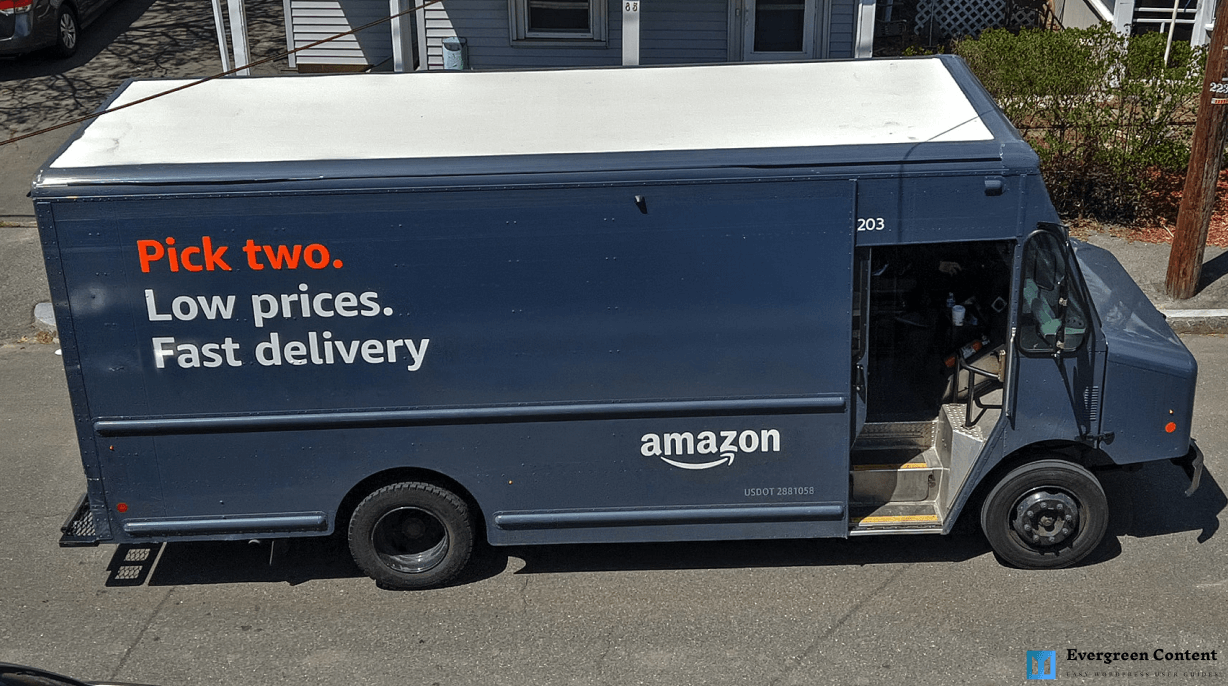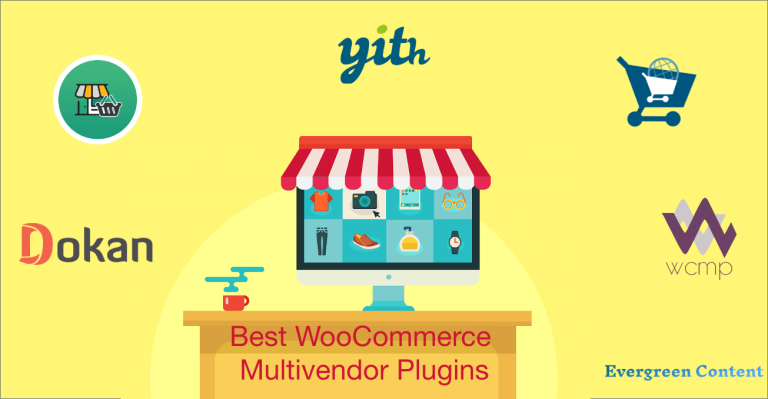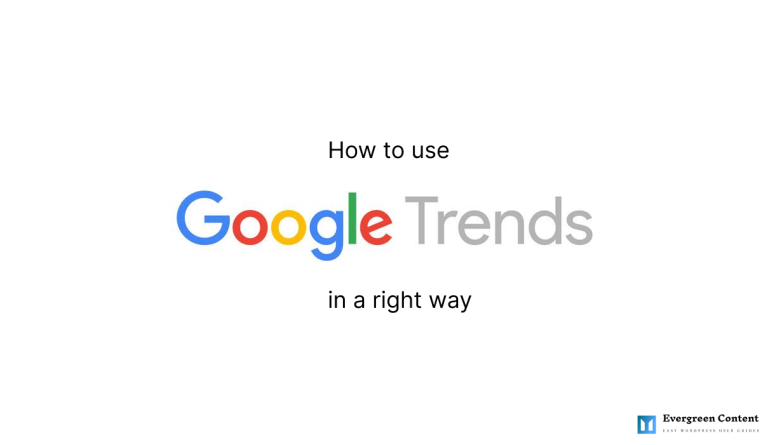Marketplace vs Dropship: Differences and What is Best for Your Business in 2024
Marketplace and dropship are two extremely popular eCommerce business models. Both have incredible financial prospects and unique ways of approaching customers. Together they revolutionized the global eCommerce industry over the last couple of decades.
For those who used to show disinterest in online businesses, Covid-19 was a wake-up call for them. Because the global eCommerce industry jumped to $26.7 trillion during this period and is still rising.
The eCommerce industry has been growing by 1%-2% per year since then. Marketplace and dropship are playing a big part behind the scene.
UNCTAD
This article will provide you with a comprehensive analysis of everything you need to know about marketplace vs dropship. Have a slice of your favorite cheese and keep reading.
Marketplace vs Dropship: Definition and Examples
Marketplace and dropship have one thing in common. Owners of the businesses don’t have to own products physically. Both of them rely on 3rd party suppliers to fulfill orders for their customers.
Marketplace Definition and Example
An online marketplace is an app or website that allows numerous vendors/sellers to sell products to customers from one platform. Owners of the marketplace are known as retailers/admins. They monitor the marketplace and facilitate trading.
Marketplace owners usually don’t stock products. Instead, they keep a commission over the selling of their listed vendors. For Example, eBay, Walmart, and Alibaba. But, if they want, they can stock inventories and sell them to the customers alongside the other vendors.
Dropship Definition and Example
Like the marketplace model, dropship maintains an app or website to take orders from customers. Owners of the website are known as retailers. Here also, they don’t have to maintain inventories.
Whenever customers make an order on the websites, retailers pass it to a 3rd party supplier keeping his margin. The supplier then completes the fulfillment process and ships it directly to the customers.
Those who fulfill the orders and ship to the customers are known as dropshippers. Some popular dropshipping platforms/suppliers are CJ dropship, Sellvia, Wayfair, etc.
Marketplace vs Dropship: Key Differences
Before jumping to the discussion of which of these two models makes sense for your business, let’s unveil the key differences between marketplace vs dropship.
| Topic | Marketplace | Dropshipping |
| Source of Information | Shows information about the vendors/3rd party sellers | Hides information about the 3rd party suppliers. Instead, retailers promote self-brand identity |
| Product Selection | It doesn’t assist or emphasize sellers in product selection | Handle the product selection and categorization |
| Pricing | Vendors set the price, not the marketplace retailers | Retailers directly control the prices |
| Profit Margins | Usually, between 5%-20%. When vendors make a sale, retailers cut a commission | Unlimited! Because retailers can set the price as their wish |
| Return and Refund | Less complicated | Much complicated |
| Customer Support | Both vendors and retailers can offer support to the customers | Only retailers are directed in communication with customers |
| Taxes | Marketplace owners/retailers pay corporate taxes and sometimes assist the vendors in remitting their part | In many countries (like the USA), dropship retailers don’t have to pay corporate taxes. Import tariff clears the part |
| Market Size | $4.15 trillion (in 2021) | $150 billion (in 2021) |
| Prospect | Assumed to hit $8.7 trillion by 2025 | Assumed to hit $557.9 billion by 2025 |
Despite all the differences, both these models have many wonderful ways to maximize your reach to customers. It’s about selecting the right model that fits your business and objectives.
How a Marketplace Works
There are different types of online marketplaces in the world. Business-to-business (B2B), business-to-consumer (B2C), and consumer-to-consumer (C2C) are some examples. But each of them has almost a similar operational model.
What is a Marketplace Model
Let’s see how the marketplace model works. The process starts after the eCommerce marketplace is launched and vendors have joined there.
Step 01: Vendors list their products on the marketplace.
Step 02: Buyers put orders on the website. Vendors receive the orders and start the fulfillment process.
Step 03: Vendors ship products directly to the buyers.
Step 04: After buyers confirm they have received the delivery, the marketplace owner keeps a commission and transfers the rest to vendors’ funds.
Bonus: Marketplace Packaging and Delivery System
Years ago, marketplaces typically had a different business model. Vendors themselves would manage the shipping method. Marketplace owners wouldn’t take this hassle. But today, most marketplaces have their own pickup, packaging, and delivery system.
After customers make an order, vendors have to drop the products at the closest pickup point selected by the marketplace. They will handle the packaging and shipment to the customers by reliable courier agencies.
To learn more, you can take the example of Amazon. Thus, the packaging and delivery system becomes another earning source for eCommerce marketplaces.
Benefits of Marketplace
Launching a marketplace could be a great business idea for those who want to sell numerous products to a broad target market. You can enjoy the following benefits from the marketplace business model:
High Traffic
eCommerce marketplaces naturally receive a huge flow each day. Amazon gets more than 2 billion visitors each month. It’s because numerous sellers are there trying to bring visitors to their online stores. The more vendors join, the higher will be the traffic flow.
Structured Framework
Many technical partners (i.e. payment gateways, couriers, logistics, and cyber support) are ready to support and grow the marketplace businesses. So, you can lay off many of your responsibilities upon them and focus more on sales and customer acquisition. This will bring mobility to your market management system.
Take Advantage of Others’ Brand Image
When renowned brands and sellers populate your marketplace, it will automatically boost your brand image. Suppose Microsoft, Apple, Samsung, PEPSI, IKEA, Coca-Cola, etc., joined your marketplace. Imagine how their presence will surge the brand value of your marketplace.
Multiple Ways to Make Profit
Alongside commission and selling products, there are many additional ways for admin to make a profit. For example, membership fee, listing fee, featured listing, freemium, and promotional charges.
International Trading
Established eCommerce marketplaces make a good number of international trade each year. It allows small enterprises to sell their products to foreign customers. This will attract many new vendors and buyers to join the marketplaces.
Scalability
Marketplaces are likely to expand quickly with the number of vendors joining there with new products. But you have to ensure that no fraudster or scammer can get there. Also, you have to make sure a balance the supply and demand.
Finally, there are many analytical tools by which you can track the sales and progress of your site. If you find customers are making huge complaints regarding some sellers, you can warn them as low-quality vendors and even restrict their trade if necessary. So, the ultimate control is at your hand.
Drawbacks of Marketplace
There are some potential drawbacks to the online marketplace model. You must consider them as well for strategic decision-making.
Huge promotional Costs at the Beginning
Whom to bring fast in a new marketplace, sellers or customers – is a riddle to all marketplace owners. Why will vendors join if there is no buyer? Again why buyers will visit if there is no seller? This means marketplace owners have to burn a good sum of money at the initial stage for promotional purposes.
Loyalty is More Difficult to Achieve
It’s common that when customers get the wrong product or face delivery issues, they put all the blame on the marketplace. Most of them can’t differentiate the concept between vendors and marketplaces. So, growing loyalty at the beginning is challenging.
Low Margins
In the eCommerce marketplace, you cannot set the prices of your vendors’ products. Your commission will decrease if sellers set low prices on their products.
Cyber Attack
Cyberattack is a common threat to eCommerce marketplaces since a good amount of transactions take place each day. They try to steal customers’ valuable information (i.e. credit card, debit card, phone number). So, you must appoint strong cybersecurity experts to safeguard your marketplace.
Quick Support is a Must
Since Google and other popular platforms are constantly updating their systems. You’ll always find some gaps to fill up to facilitate trading in the marketplace. Therefore, quick support is a must to establish a successful marketplace.
Remember, drawbacks don’t always hold you back. It also gives you the opportunity to dig out competitive advantages to thrive in the market.
The Marketplace is Best for Whom
Hope now you understand, you’ll need some sort of caliber to launch and run an eCommerce marketplace. This is why this model isn’t suitable for all classes of people. Below are the group of people for whom launching a marketplace will be the ideal business model.
Established Manufacturing Companies
Established manufacturers usually have a good number of loyal customers. By opening a marketplace, you can bring them all to your website. It will attract more vendors to join the marketplace since it’s already getting traffic. Again, the new vendors will keep bringing new visitors, which may soon turn the marketplace into a very popular platform.
Big Investors with Patience
Now you know that setting up a successful marketplace requires a good chunk of investment, especially at the beginning. It may take one or two years to reach the break-even point. So, having a big investment isn’t the only prerequisite. You must have enough patience too.
Popular Dropshipping or eCommerce Website
If you have a popular dropshipping or inventory-based eCommerce site, you may convert it into a marketplace website. It will help you harness the regular traffic coming to your site to bring new vendors and scale up your business.
Finally, there is no fixed rule that the marketplace model is suitable only for the above groups. Anyone who has money to burn can join the marketplace. But it’s better to evaluate your abilities to make the right investment.
How Dropship Works
Dropshipping is a great business idea for those who want to avoid the hassle of stocking inventories and warehousing. Today, droppshipping holds a 30% market share of the global eCommerce business.
What is a Dropship Model
Those who run dropshipping sites are known as retailers. And the 3rd party suppliers are known as dropshippers. Let’s see how the dropshipping model works.
Step 01: Retailers list the products of the suppliers on their websites.
Step 02: Buyers purchase products from the website.
Step 03: Retailers keep their margins and pass orders to the suppliers, including buyers’ shipping addresses.
Step 04: Suppliers then package the product, and sticks retailers’ logos, and information. After that, they ship packages to customers’ shipping addresses.
So, you can see the success potential of any dropshipping business largely depends on the reliability of suppliers.
Benefits of Dropship
Now, we’ll help you explore why dropshipping is so popular among other online business models. Keep reading!
Low Start-up Cost
Inventory-based traditional eCommerce businesses require a good amount of capital to stock inventories. Again, it’s guesswork since you never know how much you can sell in a specific month or year. Dropship eliminates these hassles as you need no inventory. So, within a minimal startup cost, you can set up this business.
Offer Items Instantly
In traditional eCommerce, sellers cannot instantly promote a new product until the remaining stock is finished. Because it’s difficult to invest in new inventories. But dropship entrepreneurs can instantly list trendy new products and offer them to customers. What he needs is good marketing knowledge.
Offer a Wide Range of Products
Offering a wide range of products is the dream of every product-based organization. And the dream comes true with dropshipping. Just choose a suitable niche that goes with your passion and experience. Then list and categorize products perfectly so that visitors can easily find them.
Test New Products Without Risks
Introducing new products is always a risky and costly project. Unless customers buy it, the whole investment will go to the dustbin. Since dropshipping is free of inventory management, you can effortlessly test trendy new products to sell.
Time-Saving
Dropship can be a passive income source. Alongside a full-time regular job, you can easily manage a dropshipping site. Because the fulfillment process is taken care of by the 3rd party suppliers. Research shows that successful dropship entrepreneurs usually spend two to three hours daily.
With the rapid rise of transformation infrastructure, logistic service, and information technologies, dropshipping is still an effective platform for an eCommerce business.
Drawbacks of Dropship
Dropship definitely has many positive sides but isn’t totally free of complications. Before making up your mind, let’s explore the drawbacks explained below.
High Competition
Since dropshipping is easy to start, this platform is saturated with heavy competition. Even you’ll find your competitors are using the same suppliers to fulfill their orders. So constantly, you have to discover other ways to ensure competitive advantages.
Almost No Control in Order Fulfillment
The only thing you can control in dropship is pricing and product information. Rest things (i.e. package design and shipping) are fully in the hand of suppliers. So, if customers ever make an issue (i.e. return, refund), you can’t instantly fix it because it’s not in your supply chain.
No Control On Product Quality
If you are dropshipping, you have zero scope to see the products. One day, maybe after waking up, you’ll see tons of emails containing customers’ complaints about their products. Can you imagine the catastrophe waiting for you?
Shortage of Stock
Since the same suppliers are fulfilling for other retailers, you don’t know when their stock will end. Sometimes, it may happen you are running a paid promotion, but that particular product has gone out of suppliers’ stock.
Complicated Refund System
If you can pick the right suppliers, you have less chance to face this complexity. But still, it may happen to you. Because you can’t always refund from your own pocket. First, you must take a refund from your supplier, then pay it to your buyers. It becomes a time-consuming process that may dissatisfy the customers.
Finally, there are a lot of positive things about dropshipping. But you cannot ignore the drawbacks if you want to establish a sustainable business.
Dropshipping is Best for Whom
Remember, dropshipping doesn’t guarantee success for all types of businesses. There are better alternatives too. It will be easy to make a decision if you can identify dropshipping is best for whom.
Cash Strapped Entrepreneurs
Many people are interested in launching an online business but don’t have enough money to stock inventories. For them dropshipping is a great solution. There are much popular dropshipping software by which you can create a dropshipping site overnight with minimal expenditure.
Job Holders Looking for Passive Income
Time and energy are two crucial factors that hold people back. Yet many people are looking for passive income alongside a regular job. Once you learn perfectly how the model works, maintaining this business won’t take more than three hours daily.
People Wanting to Improve Their Online Skill-Set
If you decide to launch a business with zero skill, sooner or later, you might be thrown out empty-handed. Again, without practical experience, you can’t grow your skills. In this case, dropshipping can help you improve many valuable skills required to run eCommerce businesses.
Today, you can build up a dropshipping site within just $200. From our experiences, many successful entrepreneurs were involved with dropshipping at one stage of their lives. Once you start getting success, you can scale up the business anytime.
Marketplace vs Dropship: Revenue Potential
Revenue potential between marketplace and dropship depends on how far they can expand their catalog and product assortment.
Marketplace: It gives you the fastest way to scale up product assortment in-depth and breadth. Many marketplaces allow both downloadable digital and subscription services too. Thus, the marketplace retailers can make it a place where customers can find everything they need.
Dropship: Dropship retailers have to depend much on third-party fulfillment services. Besides, dropshipping doesn’t allow downloadable digital or subscription-based products. All these limit this business model’s revenue potential and scalability.
Owned inventory: This is the most traditional business model. Here, retailers buy, store, promote, fulfill, ship, and deliver the products. So it involves significant financial risks, which limit its revenue potential.
Final Thoughts on Marketplace vs Dropship: Which One is Better for You
We believe now you have a better idea of marketplace vs dropship. There is no clear-cut answer on which one is best. It depends on your business objectives, personal skill set, and eCommerce perspective.
There is no denying that an established marketplace will bring you a lot of money. But you have to burn a good chunk of money to make it a popular platform for buyers and sellers.
Moreover, you must integrate numerous partners like payment gateways, hosting solutions, cyber support, courier services, lawyers for tax calculation, etc. You can step up for a marketplace only if you have a huge investment to make all these proceedings possible.
The dropship is an alternative if you don’t have a huge fund. There are many popular plugins by which you can build a dropshipping site overnight. If you are a newbie in the eCommerce industry, you can take dropshipping to improve your personal skill set. Once your experience reaches the ceiling, you can take a better step toward a better platform.






